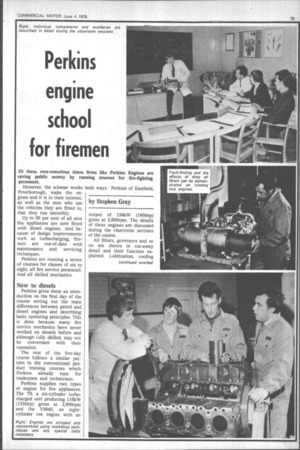engine school for firemen
Page 75

If you've noticed an error in this article please click here to report it so we can fix it.
IN these cost-conscious times saving public personnel.
However, the scheme works Peterborough, make the engines and it is in their interest, as well as the men who use the vehicles they are fitted to, that they run smoothly.
Up to 90 per cent of all new fire appliances are now fitted with diesel engines. And because of design improvements such as turbocharging, firemen are out-of-date with maintenance and servicing techniques.
Perkins are running a series of courses for classes of six to eight, all fire service personnel. And all skilled mechanics. money by running
New to diesels
Perkins gives them an introduction on the first day of the course setting out the main differences between petrol and diesel engines and describing basic operating principles. This is done because many fire service mechanics have never worked on diesels before and although iully skilled, may not be conversant with their operation.
The rest of the five-day course follows a similar pattern to the conventional product training courses which Perkins already runs for tradesmen and technicians.
Perkins supplies two types of engine for fire appliances. The T6, a six-cylinder turbocharged unit producing 116kW (155bhp) gross at 2,600rpm and the V8840, an eightcylinder vee engine with an
Right: Engines are stripped and reassembled using workshop techniques and any special tools necessary.




























































































































